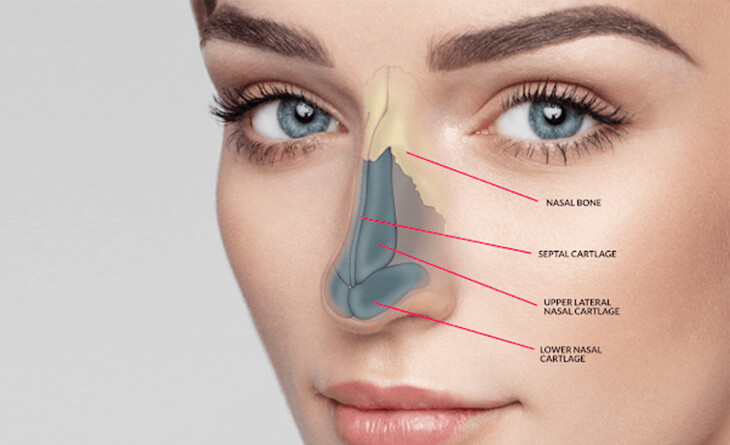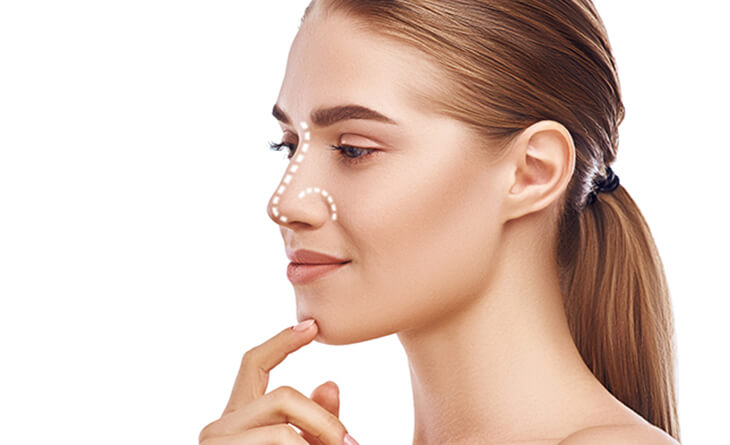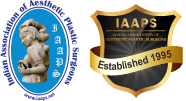Am I The Right Candidate For Rhinoplasty?
Like any cosmetic procedure, a good candidate for Rhinoplasty is anyone who is physically healthy, medically fit and psychologically stable. A Cosmetic Rhinoplasty is usually suggested only after facial growth is completed, that is after 16-18 years of age.
Rhinoplasty is a highly individualized procedure based on each patient’s concerns and the realistic possibility of surgically improving the same. After assessing the patient, a qualified Aesthetic surgeon can best advise you on how much change can realistically be achieved so that you can take an informed decision. Since the nose is the central feature of the face, a well-done procedure can bring about tremendous changes to the overall facial features.
Most individuals visit the Rhinoplasty surgeon for altering/ modifying/ enhancing certain features of the nose:
- To modify a disproportionately sized nose by reduction or augmentation
- To correct a Nasal Hump or Nasal bridge depression
- To correct a crooked or deviated nose
- To Refine or Reshape the Nasal tip
- Improve overall nasal contours.
- If the shape and contours of the nose do not synchronize with the shape and contours of the rest of your face.
- To improve breathing problems due to a deviated nasal septum, with or without aesthetic nose changes.
- To correct Post-trauma Nasal deformities
- Congenital/ Birth defect like Cleft Nose deformity
- Secondary Revision Rhinoplasty

General Information About The Procedure
Before undergoing the Rhinoplasty operation, one or two detailed consultations are important so that the patient understands the benefits, risks, and possible realistic outcomes of the procedure. Routine Blood tests, nasal sinus Xray films or the occasional CT Scan are usually done to know nasal septal deviation, nasal polyps or any other internal sinus problems. Various 3D Software applications can sometimes be used before the surgery, to explain the operative plan and simulate postoperative results. It is important the patient understands that the actual surgical results will be similar but not exactly the same as shown by computer morphing.
A complete discussion on your pre-existing medical conditions, medications, alcohol and tobacco use is necessary with your surgeon. Medications and supplements that cause blood thinning need to be stopped at least 5-7 days before surgery. Smoking must be stopped at least 2 weeks before surgery.
Rhinoplasty can be performed under either General Anaesthesia or under Local Anaesthesia with sedation. Rhinoplasty can be done in two ways- Open Rhinoplasty and Closed Rhinoplasty.
In Closed Rhinoplasty, the nose is approached via entirely internal incisions, so no external visible scars are left. Localized corrections such as Hump reduction, Augmentations of the bridge, Narrowing of the bony pyramid can be achieved by the closed approach.
In Open Rhinoplasty, a small visible external incision is made to connect the internal incisions and enable access under direct vision to ALL areas of the nose. Comprehensive rhinoplasties where changes are planned in most areas of the nose are best done by the open approach. The external scar is barely visible by even the end of 3 weeks.
A nasal plaster or splint will be placed over your nose as a protective cover, which is usually removed at the time of stitch removal at 6-7 days. If work on the nasal bones has been done, then the splint may remain for 1-2 weeks more.
Results To Be Expected
The new shape of the nose is clearly apparent after 2-3 weeks, but the swelling may take several weeks to months to completely subside. In patients with thick and oily nasal skin, post-operative swelling may remain longer. All Rhinoplasty patient must be informed that it is possible that minor corrections may sometimes be necessary after 6months to 1 year. After a secondary operation, healing times could be longer.

Postoperative Do’s And Don’t’s
Most patients can return to normal activities by 2 weeks. Sports, Gym exercises or any strenuous physical activities should be curtailed for at least 6weeks. Camouflage makeup is advised if one wants to travel after the first week of surgery, to cover any bruising. 7-10 days leave from work is advisable.
Postoperatively swelling, skin bruising and swelling around the eyes, postnasal drip and nasal stuffiness are common. All of these symptoms vary with different individuals. Medications are prescribed to ease your discomfort. The patient is advised to keep the head elevated when sleeping for the first week. Do not blow your nose, or sneeze too hard in the first 3 weeks postoperatively. Smoking is inadvisable for at least 3 weeks, it can result in poor healing and prolonged swelling.
After 4 to 6 weeks, you may gradually ease into your usual fitness routine with caution being exercised while undertaking contact Sports activities to prevent injury to the operated nose.
What Can Go Wrong And How Is It Remedied?
Rhinoplasty results take a while to appear. Patience is therefore required as the nose settles down over weeks to months. A qualified Aesthetic surgeon tries his best to make the nose look as natural as possible as well as harmonize with the rest of the facial features. Over the entire first year, your results and appearance will continue to improve. Sometimes the result is not upto the patient’s expectations. Regular follow-ups with your surgeon and trust are essential to monitoring progress. In many instances, a secondary procedure may be necessary to further improve your outcome.
